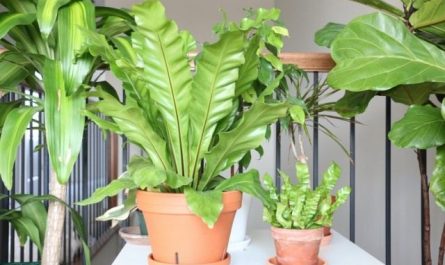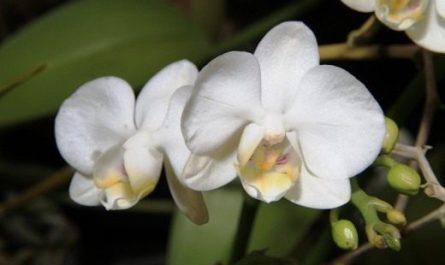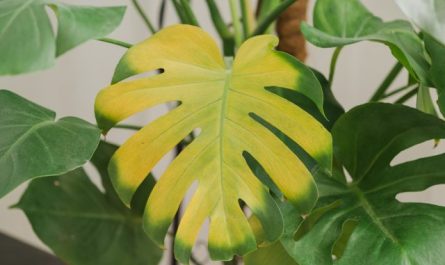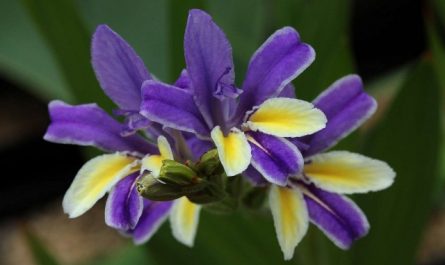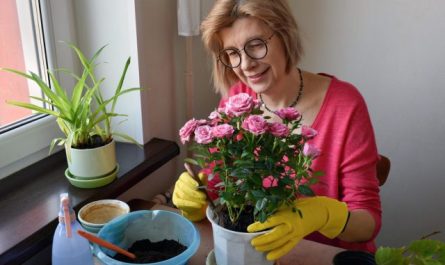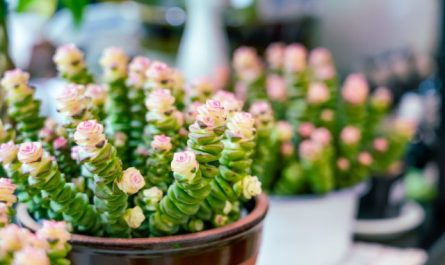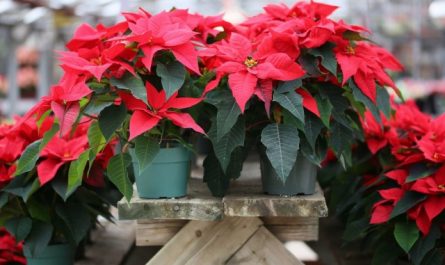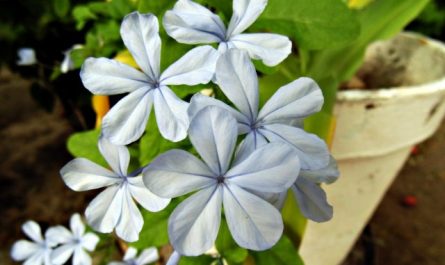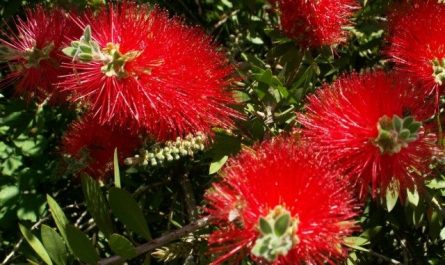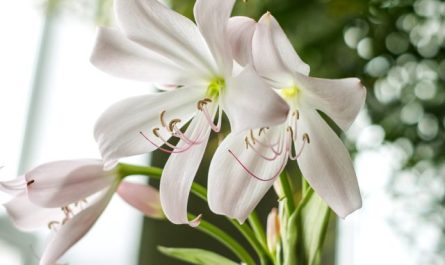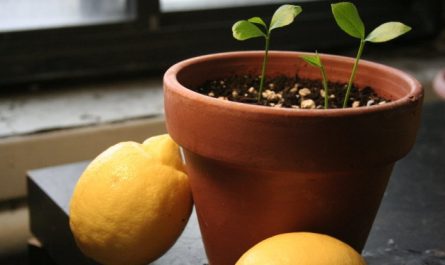We are used to planting seeds for seedlings, planning the future harvest. But generative reproduction is typical not only for tomatoes and cucumbers, but also for tropical flora. Usually we buy potted flowers in stores, but meanwhile, you can grow a houseplant yourself without extra costs. Of course, you will have to wait more than one year until it blooms. But the wait is worth it! Just imagine how interesting it is to observe the entire life cycle: from a small seed to an adult plant, to monitor the growth and development of your “ward”. Which houseplants can easily be grown from seeds at home, we will tell you in the article.

1. Adenium
Nowadays, stores offer a wide selection of seeds of colorful varieties of desert roses. This is what this beautiful and unpretentious flower is called. Adenium is unpretentious by nature: all it needs is bright sun and rare watering.

Seedlings appear on the 7th-10th day. As they grow, they get stronger and form a thickening at the base, the trunk grows in width, and foliage forms at the top. After 2-3 years, the newly-made succulent will delight you with flowers. And from the grown adeniums, a real Bonsai-style garden will turn out.
2. Cyclamen
The Alpine violet, as this flower is also called, is not inferior in beauty to the desert rose, although it comes from the cool regions of Europe. Nowadays, collectors can get varieties with double flowers. Given the right conditions, cyclamen can bloom almost continuously.

The plant obtained from the seed actively grows its underground part at first, and in the third year it forms flower stalks. It is not difficult to care for it, it is only important to provide the cyclamen with a cool winter – this flower does not like heat and stuffiness.
3. Date
Don’t rush to throw away dried date pits! If you like indoor plants, you can become the owner of a miniature palm tree. It’s hard to believe that a real giant grows from a small pit. But this is how palm trees reproduce in nature.

However, you should not expect quick results, the seedling will appear in a month, and the date palm grows for a very long time, adding about 5-7 cm per year. At the same time, the desert plant will still require minimal care, the main thing is to provide it with bright light and moderate watering.
4. Plumeria
Another representative of tropical vegetation is plumeria. This amazingly beautiful plant in bloom is also called frangipani. The flowers, opening, emit an incomparable, exotic aroma. In addition to the classic white, the flower has pink, crimson, yellow and even orange colors in its “reserve”.

Getting it from a seed is not difficult at all, and an adult plant will not cause any trouble. Frangipane grows very quickly, reaches impressive sizes (up to 2 meters), requires frequent replanting and a considerable area in the room, abundant watering and a sunny location.
5. Pelargonium
This flower can be called a record holder for the number of varieties and abundance of colors. The amazing pelargonium has long settled on the windowsills of apartments and has become accustomed there. Strong plants grow from seeds, capable of flowering already in the second year.

Among flower growers there are collectors and breeders of pelargoniums, owners of a whole range of colors. A minimum of effort and your collection will also be replenished with a blooming specimen. Allocate a sunny windowsill for pelargonium and do not forget to water it regularly.
6. Nolina
The second most popular and unpretentious palm, which easily grows from seeds, is the beaucarnea. In a greenhouse, shoots appear within a month. Unlike the date palm, the nolina grows quite quickly at first, then its growth slows down.

This is one of the easiest plants to care for, recommended for “lazy” gardeners or those who are rarely at home. Storing moisture in its trunk, nolina can survive without watering for several weeks. Its original appearance only adds points to it.
7. Passionflower
From palms and ornamental flowering plants, let’s move on to more useful ones – fruit-bearing ones. This is, for example, passion flower, also known as maracuya. The exotic flowers turn into fruits, which in nature have an unusual taste. It is also possible to get edible passion fruits at home, but you will have to try a little.

Passionflower is demanding of humidity and lighting, especially in winter. It also needs regular watering. At the same time, the decorative lane grows quickly and takes well to pruning.
8. Hot pepper
Miniature pepper varieties not only look impressive, but also provide fruits for all lovers of spicy food. After flowering, the bush, like a Christmas tree, is decorated with colorful fruits. Such an outfit looks truly impressive.

Sowing indoor peppers is identical to growing the garden “namesake”. The seeds germinate quickly, and the newly-made plants bloom in the first year, forming edible fruits. The difficulty is only in providing the pepper with wintering with artificial lighting and high humidity.
9. Garnet
Of course, it is impossible to grow a large and juicy pomegranate fruit in closed ground conditions. But it is quite possible to get a spectacular plant and quite edible small pomegranates. The decorative pomegranate is distinguished by its miniature size and lush flowering.

The seeds germinate in a couple of weeks, and the fruits appear already in adult specimens. To care for this refined tree, you will need some skills. Regular watering, the presence of light even in winter, coolness and humidity will be fully compensated by the beauty of the flowering and fruits that this exotic will give you.
10. Ornamental foliage
Many of the leafy plants that we carefully grow in our apartments grow right outside in tropical countries. By planting seeds at home, you can also get a spectacular decorative flower. Among the fast-growing ones are orange Chlorophytum (Chlorophytum), multifaceted dracaena (Dracaena), Fatsia japonica (Fatsia), elegant jakarand (Jacaranda) and even loved by many Ficus Benjamina (Ficus benjamina).

All these plants have similar care requirements: bright but diffused light and regular watering. In winter, some evergreens may lose their leaves due to dry air, but in spring they restore their crown.
11. Citrus
It is very tempting to grow your own lemon tree on your windowsill to harvest for tea and not have to run to the store for lemons unnecessarily. And this is real, but keep in mind that plants grown from a seed do not begin to bear fruit soon. Therefore, you will be able to get the first full harvest only after 5-7 years.

Citrus seeds are also slow to germinate: the first seedlings will appear only after 3 or even 7 weeks. Growing citrus is easier if you are no longer a newbie in gardening. After all, they all require a certain approach, love humid air, stability in care and proper wintering.
12. Gesneriaceae
This is a whole group of magnificent flowering plants that are easy to grow from seeds. These include the familiar to many koleria (kohleria), gloxinia (gloxinia), Streptocarpus (streptocarpus), Saintia (saintpaulia). There are no special rules for growing new specimens; these flowers are not too demanding in care. The main thing for them is the presence of light, stable temperature and moderate watering.

All Gesneriaceae are easily propagated by leaf cuttings, but it is seed propagation that allows you to obtain new varieties. In stores and from collectors, you can find varieties with double flowers of all possible colors.
13. Cacti
Surprisingly, even cacti can be grown from seeds at home. Who would have thought that these prickly “aliens” could develop from a small seed! The rules for planting seeds are no different, only the substrate should be the lightest, based on sand, and it should be moistened with a spray bottle with special care.

It is not difficult to get seeds, and they are much cheaper than adult flowering specimens. And watching the growth of the cactus from the very beginning is very interesting!
Sowing seeds – general rules
It is recommended to mix very small seeds with sand, and large ones, especially flat ones (for which it is difficult to find the top) should be placed horizontally so that the sprouted seedling does not sink into the ground.
The process of planting tropical plant seeds does not have any fundamental differences. For planting, take a light mixture based on peat and sand, moisten the surface, and do not plant the seeds too deep. It is enough to sprinkle them with a centimeter layer of substrate.
For faster germination, you can set up a greenhouse from a transparent bag or glass. The containers are placed in diffused light, and the emerging seedlings are thinned out if necessary. With the appearance of the third pair of true leaves, they can be planted in a permanent place.
Palms and fruit trees are best planted directly into a pot with a reserve of soil for subsequent growth. Young seedlings of these plants do not tolerate transplantation well.


